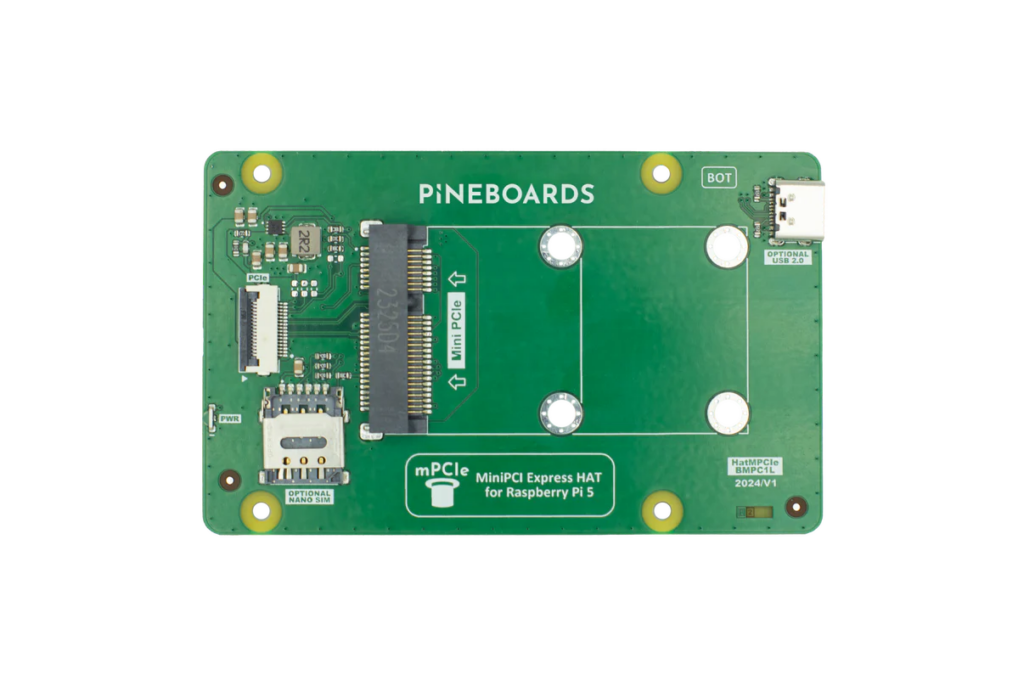As I wake up in my hotel room and April draws to an end, an interesting development has come out of Poland-based hardware/engineering company, Pineberry Pi, as they announce a rebranding to Pineboards. I don’t usually write these kinds of posts, though with the new products, it felt weird if I didn’t mention the rebranding at the same time!

Table of Contents
Rebranding to Pineboards
I guess the elephant in the room is why the artists formerly known as Pineberry Pi have decided to change their name and branding now, and whilst their announcement makes complete sense in terms of potential confusion surrounding what they manufacture exactly (I witnessed my fair share of visitors to their stand at Embedded World asking them if they’re like Raspberry Pi) I wonder if there’s a bit more to it?
Not to get too bogged down in scepticism though, I think the name change is a good thing, and as they say, doing at this point in their trajectory means that they can continue to build on things whilst having a name that’s a little more focused on what they actually do.
New Products
Pineboards Hat mPCIe
Kicking things off on the new product front we have the Hat mPCIe, which as the name suggests, is a mini PCIe Hat that allows you to connect anything with an mPCIe connection.

The fun thing with this particular hat though is that they say it will be fully compatible with a range of standards, which I can say from first-hand experience isn’t always the case with these boards sadly. Being able to work with PCIe, nanoSIM, and USB without worry will give users confidence in their purchase, though without sounding like a fanboy, did we come to expect anything else?
Pineboards HatDrive! Piano
The HatDrive! Piano is something that was shown off a while ago on social media but in their own words, they’ve not had the time to launch it officially yet (which is fun, as I’ve now been seeing very similar boards from other vendors!) but now is its time.

Full stereo audio output and Hifiberry compatibility mean that you can build a lovely little audio system on your Raspberry Pi 5, whilst also throwing an M.2 NVMe SSD into the mix (though only up to 2242 form factor, if you have anything larger, you’ll need to look elsewhere, or at the HatBRICK! Commander to start stacking).
Pineboards Hat AI! Dual Edge
Google’s M.2 Accelerator, the Dual Edge TPU, is an M.2 E-Key TPU offering 8 TOPS of performance, at 2 TOPS per watt of power consumption. All of that sounds great, though a lot of E-Key implementations only offer a single PCIe lane to the E-Key, meaning that only 1 of the Edge TPUs on the board will be utilised.
Well, if that’s a worry you had/have, then worry no more as you can now throw one of these onto your Raspberry Pi thanks to the Hat Ai! Dual Edge which feeds your little AI friend with 2 PCIe Gen 2 x1 lanes so that both can be running at full whack.
Pineboards Hat uPCIty Lite
Saving arguably the most interesting until last, we have the uPCIty Lite. Pineboards teased this on Twitter last week and it shows off an open-ended PCIe x4 slot which gets supplemental power via an ATX source (at up to 12V/8A) so it will make things fun for people like Jeff Geerling who like to play around with PCIe devices in their Raspberry Pis! Though given this mounts on to, maybe don’t go throwing your Nvidia 4090 on top of your Pi 5..
It should open up some very interesting possibilities for those who want to tinker. To whet your appetites further, a variant with a full PCIe x16 slot will be available very soon.
If you don’t have a Raspberry Pi 5 yet, you could look into alternatives popping up, such as those from Radxa as I recently tested PCIe Hats on the Radxa 5C and they make a compelling option!
What do you think of the name change? Has it made you pine for new hardware? Or are you board of it all? It’s 8am, I won’t apologise for that joke.